Infrared Sensor Based Power Saver Circuit and Working
The sensor is a device that is used to detect the changes in events or quantities and it produces approximate outputs. An infrared sensor is an electronic device that is used to measure the heat of an object and also detects the motion. It can emit and in order to sense some aspects of the surroundings. Rather than emitting it, these types of sensor measures only infrared radiation, so it is known as a passive IR sensor. There are different types of sensors such as Temperature sensor, Fire sensor, Light sensors, IR sensors, Ultrasonic sensor, Pressure sensor, Touch sensor and so on. Let us discuss the IR sensor
Infrared Sensor based Power Saver Circuit
If we forgot to switch off the fan or light and we vacate the room, then this circuit explained below will automatically switch off the electrical appliances like fans or lights after a predetermined time period. Again, if we enter the room it will automatically switch on the lights. So, in this way, we can reduce unnecessary power consumption. A passive infrared motion sensor (PIR) which is used in the circuit is as shown below.
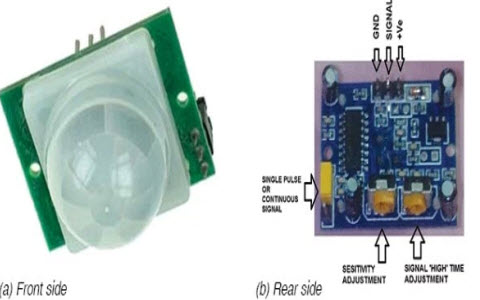
What is a PIR Sensor?
PIR sensor either used for motion detection or it is used to detect the human movement. When it detects some change, then it gets triggered because it will work by taking the snapshot of the infrared radiation signature of the room. Typically used in intruder detection systems and it is too sensitive. It has configurable sensitivity as well as configurable trigger ON time. So, it allows you to set such that it will not trigger for pets but it triggers for humans.
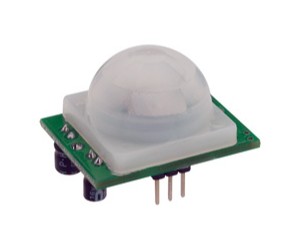
What is a Power Saver Device?
There are two kinds of electrical loads. One is inductive load (refrigerators, air conditioners, pumps, ceiling fans) and another is a resistive load (coil heaters, water heaters, lights). For a resistive load, the energy used by the appliances is the same as the electricity supplied by the utility. In the case of inductive load, a magnetic field is created by using some amount of energy which is not useful.

A power saver device improves the P.F (power factor) that results in lesser the energy supplied per utility (kVAh) per energy used by appliances (kWh). So, it reduces the current drawn from the utility.
Circuit Diagram and Working of PIR Sensor based Power Saver
The PIR sensor-based power saver circuit diagram is shown below. The designing of this circuit can be done by using various electrical and electronic components like bridge rectifier, PIR sensor, IC NE555, rectifier diodes, etc. This circuit uses a PIR sensor to sense the people’s existence using IR radiation when the public comes into or goes away from the room.
The Required Components
Semiconductors: NE555 timer (IC1), BC547 NPN transistors (T1,T2), IN4007 rectifier diodes(D1,D2), DB107 bridge rectifier (BR1), 5MM LEDs (LED1,LED2).
Resistors: R1, R6 (2.2 kilo-ohms), R2 (10 kilo-ohms), R3 (220-kilo-ohm), R4(1 kilo-ohm), R5 (4.7-kilo-ohms), VR1( 1 mega ohm photometer).
Capacitors: C1, C3 (1000uF, 25V electrolytic), C2, C4 (O.1uF ceramic disk), C5( 0.01uF ceramic disk).
Miscellaneous: CON1 to CON3 (3-pin connector), X1 (230V AC Primary to 9V, 300mA secondary transformer), RL1 (9V, 1C/O relay, PIR sensor module).
Test Points: TP0-GND, TP1-9V, TP2-3.3V, TP3-0-9V, TP4-9V
In this circuit, the resistor (R3), the capacitor (C3), a potentiometer (VR1) are used as a timer to change little time duration of the passive infrared signal to a lengthy delay. The o/p of IC1 at pin-3 drives the T2 transistor and controls the relay RL1. Here, the relay is used to control loads like fans, lights, etc.
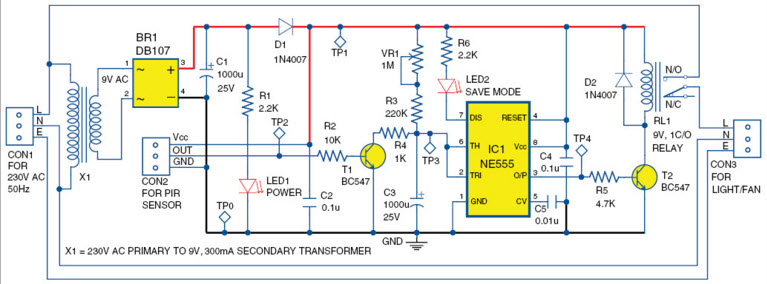
Here 230V AC supply is stepped down to 9V using the transformer; then the bridge rectifier rectifies this voltage & filtered by C1 capacitor. As a result, we can get 9V DC at TP1 test point. The resultant 9V DC voltage is used as the power supply to the entire circuit.
When the circuit gets activated, the C3 capacitor gets the supply through R3 resistor & potentiometer VR1. During this time, the voltage at pin2 and pin6 of IC1 is less than the voltage supply, and therefore o/p pin-3 goes high. This activates the relay via the T2 transistor, and the load will be turned ON. When the C3 capacitor gets the supply voltage then the IC1 output at pin-3 goes low and deactivates the relay to turn off the load after some delay that can be changed through the VR1 potentiometer.
Depending on the setting in a sensor, the output pin goes high when the motion is noticed by a sensor. The PIR sensor gives a high signal which is fed to the base terminal of the T1 transistor, then the C3 capacitor discharges through the R4 resistor.
When the voltage reaches less than 2/3rd of its power supply, then the output pin goes high at IC1, then the load is under switched ON condition. During the switched OFF condition, LED2 will glow. So, this indicates that the circuit is under the power-saving mode.
Construction and Testing of Circuit
Connect a 230V AC input to CON1 which is enclosed in a small box called PCB. And at the rear end of the box connect a load to CON3. Using the 3-wire cable, connect the PIR to the PCB at CON2 and install it in your room at a suitable location. The PIR sensor-based power saver circuit with actual size and single-side PCB is as shown below.
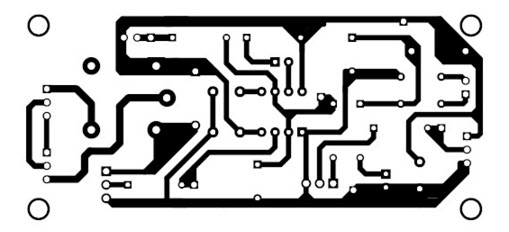
Before using a PIR sensor, just check it by connecting the GND and Vcc pins to a 9V battery. Now wave your hand in front of the sensor, and then check for a change in the voltage with respect to the ground at the signal output pin. Adjust time controls and sensitivity of the PIR as per the requirement. For better sensing, the dome of the surface should be clean.
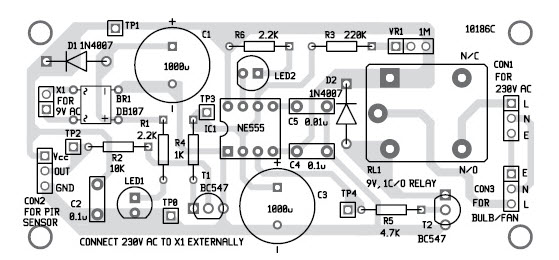
IR Sensor Applications
IR sensors are used in various electronic devices and also in various sensor-based projects which measure the temperature are discussed below
Flame Monitors
These types of devices are used to monitor how the flames are burning and to detect the light which is emitted from the flames. The pyroelectric detector, PbSe, Pbs, two-color detector are some of the commonly used in flame detectors.
Radiation Thermometers
To measure the temperature, IR sensors are used in the radiation thermometers. It has the following features like a faster response, easy pattern measurements.
Gas Analyzers
IR sensors are used in gas analyzers which uses the absorption characteristics of gases in the IR region.
IR Imaging Devices
This is one of the major applications of IR waves mainly because of its virtue of property which is not visible. It is used for night vision devices, thermal imagers, etc.
This is all about Infrared Sensor-Based Power Saver Circuit and Working. We believe that the information given in this article is helpful for you for a better understanding of this project. Furthermore, any queries regarding this article or any help in implementing the electrical and electronics projects, you can feel free to approach us by connecting in the comment section below. Here is a question for you, what is the working principle of the Infrared Sensor-Based power saver circuit.


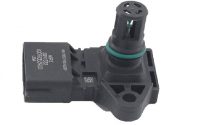
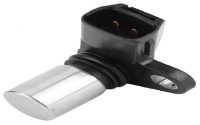
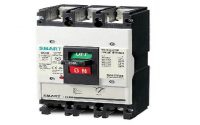
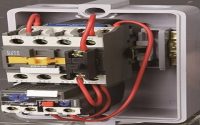
Comments are closed.